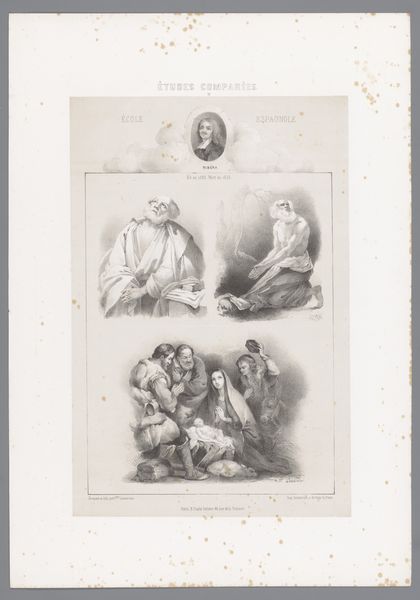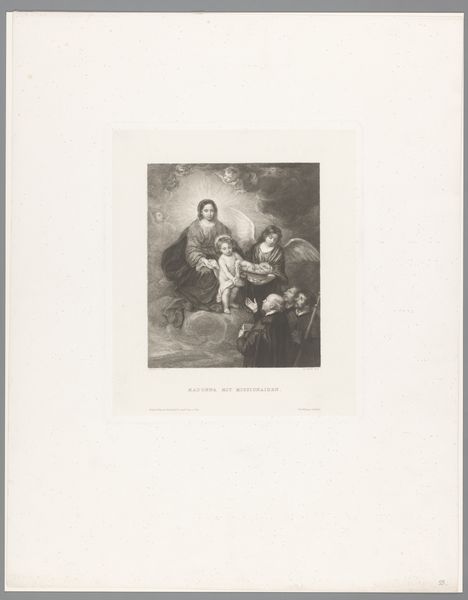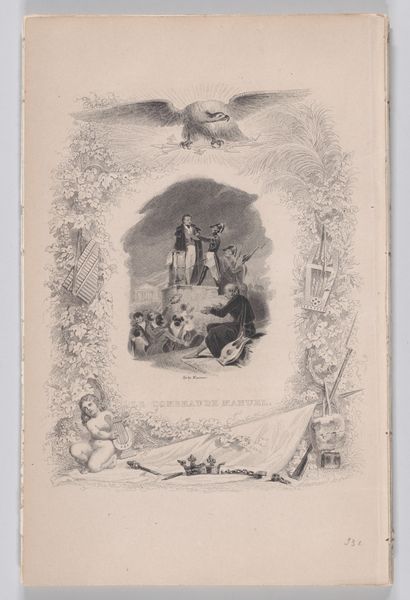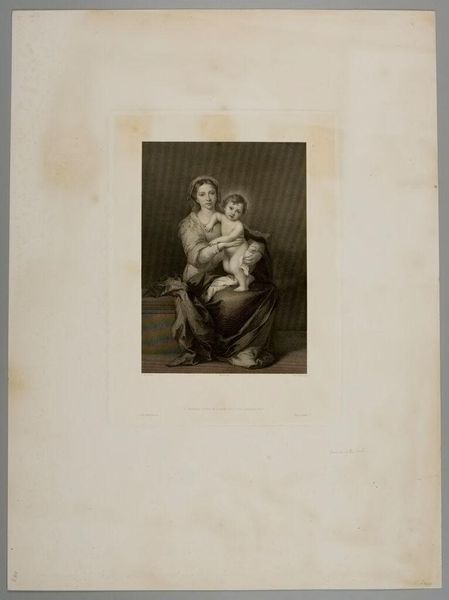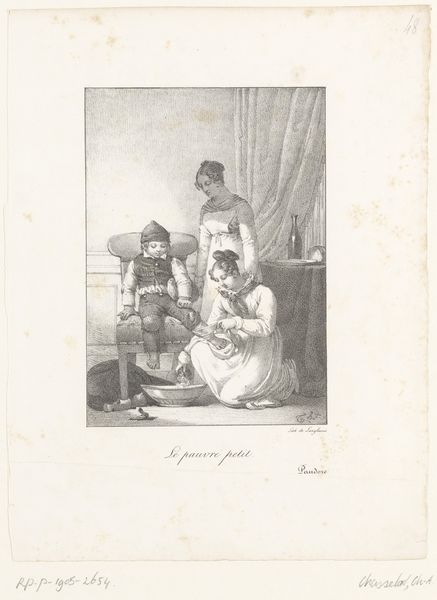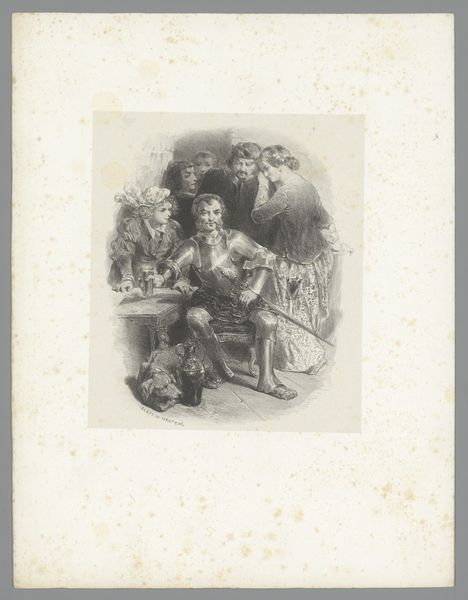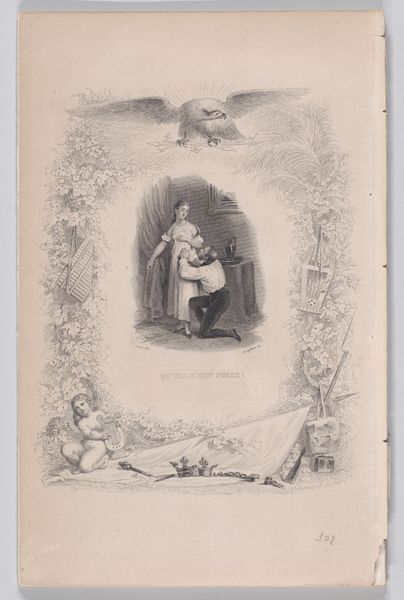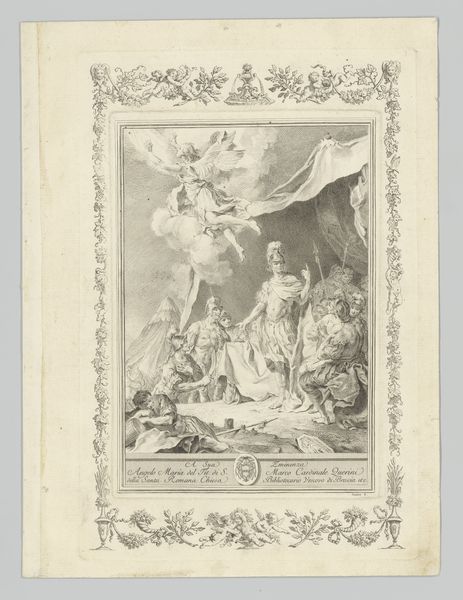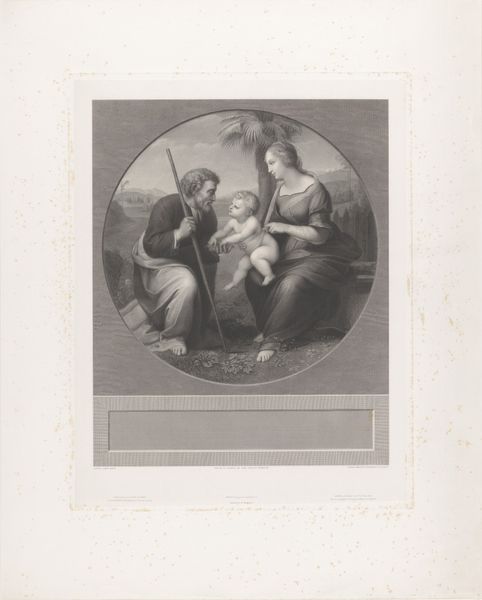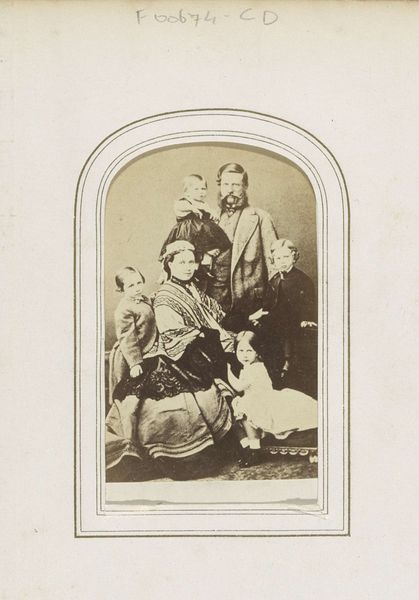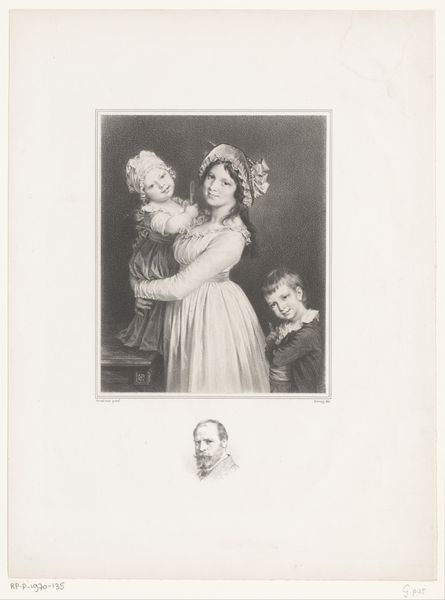
drawing, print, engraving
#
photo of handprinted image
#
drawing
#
aged paper
# print
#
history-painting
#
engraving
Dimensions: height 447 mm, width 316 mm
Copyright: Rijks Museum: Open Domain
Curator: This engraving, "Studies after paintings by Bartolomé Esteban Murillo," created around 1850 by Charles Nicolas Lemercier, offers a fascinating glimpse into artistic interpretation and reproduction during the 19th century. The work itself appears to be several smaller compositions combined onto one plate. Editor: It has a distinctly ethereal feel to it, despite being an engraving. The swirling clouds and softly rendered figures create a dreamlike atmosphere. I’m immediately drawn to the central figures: women and children, seemingly suspended in a heavenly realm. Curator: Exactly. Lemercier, through this print, disseminates Murillo’s imagery. Consider how the printing press broadened access to masterworks, shaping the public's art historical knowledge. Murillo, by the 19th Century, was very well respected. Editor: The women, though, possess a strong resemblance to depictions of Madonna. Look at their posture and their tender interactions. And there is a figure that is easily interpretable as a God. What do we know about these reoccurring types of characters at this time? Curator: Yes, iconographic references to Marian imagery were widespread, particularly in Europe. I imagine it offered spiritual reassurance, familial harmony, as society rapidly industrialized and old rural lifeways waned. This work could represent an idealized form of feminine virtue in art and society at large. The proliferation of works such as this one are really a window into Victorian value systems. Editor: It’s interesting to consider, that this religious, or religiously inspired imagery persists with its traditional weight even after decades of secular movements in philosophy and government. Curator: This image then shows an attempt to synthesize these sacred ideas, adapting Murillo for contemporary viewers during a time of cultural shift and political realignment. It embodies an interplay of artistic reverence, mechanical reproduction, and historical circumstances, rendering this image a compelling example of art's journey across time. Editor: Absolutely. There's an interplay between faith and everyday experience rendered palpable through the visual vocabulary employed. That blend and the images soft execution really holds the viewer captive even to this day.
Comments
No comments
Be the first to comment and join the conversation on the ultimate creative platform.
